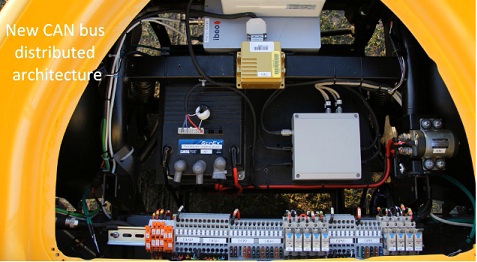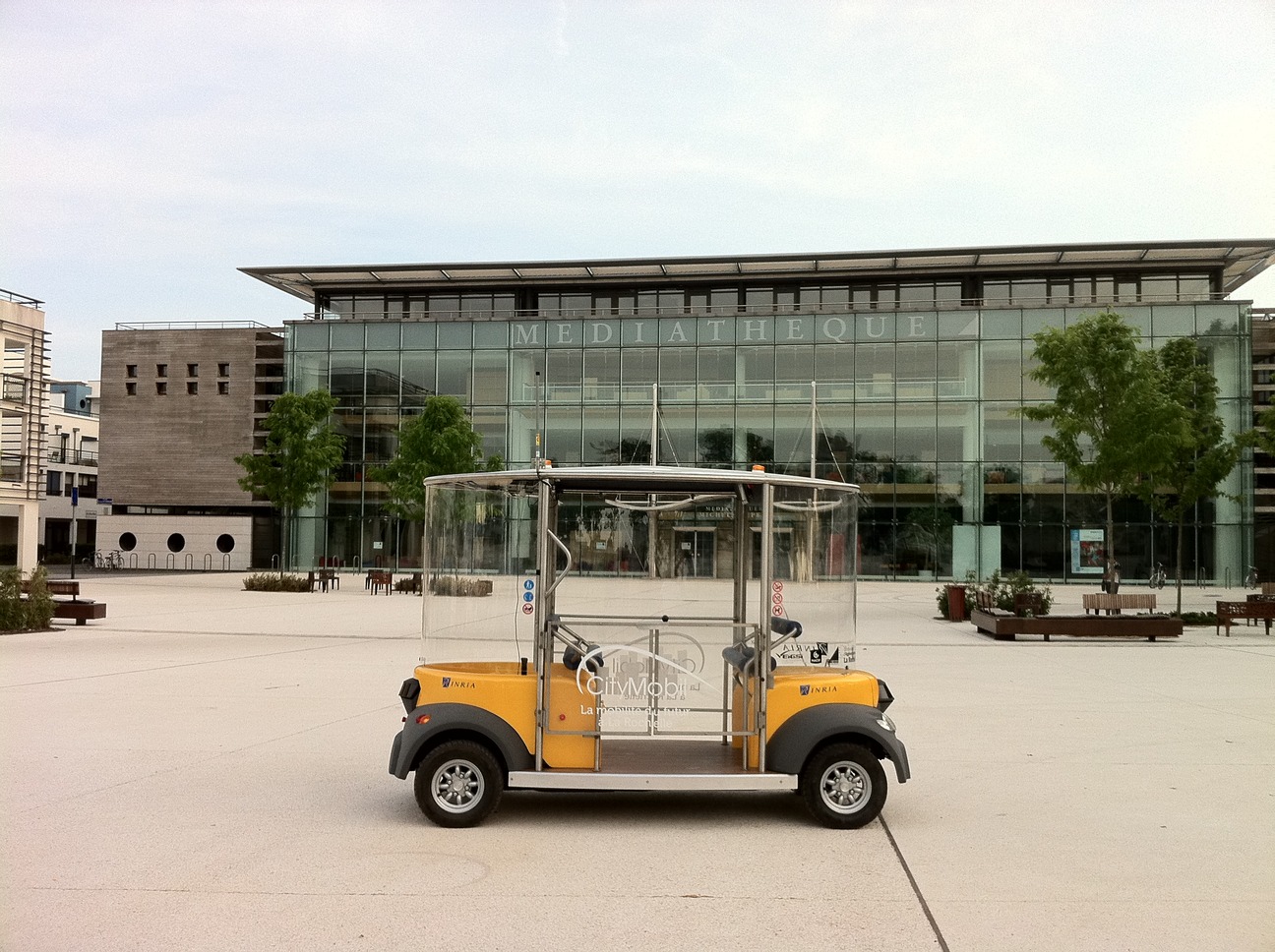Section: New Results
New urban transportation platforms: INRIA's Cybus
Participants : Laurent Bouraoui, François Charlot, Carlos Holguin, Fawzi Nashashibi, Tony Noël, Michel Parent, Paulo Lopes Resende, Jianping Xie, Armand Yvet.
In order to achieve autonomous driving, autonomous systems (robots, intelligent vehicles, UAV's, UGV's,...) must have a decisional system that integrates an advanced perception system that performs sensors data fusion and environment modeling. From perception to control, task planning and path planning algorithms have to plan safe and optimized itineraries while processing sensory data. Motion control is the last link of the processing chain where itineraries and dynamic trajectories are executed by the low level control system. IMARA works on each of the topics mentioned above.
With the European projects CityMobil and CityNet Mobil, IMARA had the opportunity to validate the autonomous driving architecture developed through the projects showcases held in European cities. In 2011, several cities hosted IMARA team in charge of demonstrating autonomous driving and autonomous sensor-based navigation using sensory data (laser scanners) and GNSS (GPS). These events were a total success and were the opportunity to deploy and test the large-scale SLAMMOT system used for environment mapping, vehicle localization and mobile obstacles detection but also the new VMS (Vehicle Management System) developed in order to coordinate the mobility and navigation of several Cybercars (INRIA's Cybus platforms).
For this purpose, the perception sub-system was based on the generic SLAM-based system that was already presented in detail last year [43] . The proposed localization architecture has been implemented in two different vehicle platforms. AGV is a fully autonomous vehicle equipped with two IBEO Alasca-XT laser scanners (left and right front corner). Cycab is a prototype of smart car mounted with a single IBEO-ML laser scanner in front.
This year, because of delivery problems related to an industrial partner, IMARA had to design and develop its own cybercars. Thus the Cybus are the newest prototyping and demonstration platforms designed at INRIA. Apart from the chassis and engines, the whole hardware and software systems were developed thanks to IMARA's researchers and engineers talents. These electric vehicles are based on a Yamaha chassis but the embedded intelligence is the result of this year's IMARA developments. Much of the perception and control software is now registered.
The system developed can be seen as an experimental platform for a new public mobility transportation system operating in mixed environments. This electric vehicle is a “clean” transportation mean that is capable to achieve the well known last-mile itinerary in urban areas where classical transportation means are inefficient or simply non profitable. In order to demonstrate the feasibility of the system, a 3-months service has been programmed in the City of La Rochelle. The Mayor of the City authorized the Cybus to operate during 3-months providing free transport service to the inhabitants of the city. For that purpose, a 2 kilometers route has been defined on which 5 calling stations where installed. The users were able to call the Cybus from any station to reach any other station. The evaluation of the system has shown an acceptability of more than 95% among population; very low failures or technical leakages were reported. Following this successful operation, the European Commission asked INRIA to extend this operation as well as its technical capabilities in order to achieve a simultaneous multiple Cybus navigation. This was achieved last December and was a real success.
The platforms developed here (Cybus) were exploited and demonstrated in the context of the EU-CityNetMobil project. The cities of Antibes (France) and Reggio di Calabria (Italy) hosted the team for 2 weeks respectively in order to experiment this new mobility and transportation mean in the heart of their cities.
Following this success, a new proposal of CityMobil-2 project is under submission with the objective this time to extend real operational mobility services to 6-12 months in selected European cities !




